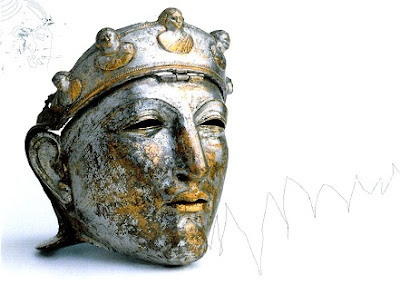Cards from Germany, Northern Ireland, Netherlands and Russia for the Monthly RR of last month.
www.papersisters.de
When I got this card, my 1st thought was "oh, I already have this one." No, I've a different edition, the 3rd and I think this is the 1st.
This one depicts a dachshund, a pretzel, the former german currency D-Mark and the Bradenburg Gate.
The card was sent by Nadine.
www.NIgifts.com
All these cards are great but I've to confess that this one, sent by Rachel, is my favorite.
Dunluce Castle, thought by many to be the most picturesque and romantic of Irish castles, was originally occupied by the MacQuillan family and later the MacDonnells. It was besieged by the British in the 16th Century. An accord was eventually signed with the English monarch in the name of peace.
Part of the castle broke off and the kitchen plunged into the sea, during a storm one night in 1639, killing all the cooks and kitchen-hands. There remains a dark hollow where this part of the building stood.
Underlying the areas importance as one of the main historical sites in Northern Ireland, recent archaeological excavations have uncovered a well preserved merchant town surrounding the castle. The portions excavated have been dated to the early 1600’s but they show that there was a street grid system and buildings had indoor toilets.
These are the white dunes of the Slufter, in the Duinen an Texel National Park.
The main part of the Slufter is a wide dune valley which has an open connection to the North Sea through a hole in the outer dunes. At high tide seawater streams into the Slufter though creeks and at low tide it streams out again. The large Sluftercreek at the beach is where the water comes through most of the time. Over time the creek has moved in a northern direction. Because this creek was heavily damaging the dunes on the northern side in May 2004, intervention was needed. A new creek was constructed on the far most southern part of the Slufter, and the old creek was closed up a week later. On an average high tide the seawater only gets into the creeks and small lakes, on an extreme high tide the larger part of the Slufter is inundated.
The Slufter is separated from the North Sea by two long dune strips, this area is called De Lange Dam. In between the dune stripes there is a valley with fresh water, many orchids grow here. - in: wikipedia
Card sent by Annerie.
Yulia sent me a nice card of a snowy ribbon pine forest in Barnaul, one of Siberia’s major cities and the capital of Altai Krai.


.jpg)



















